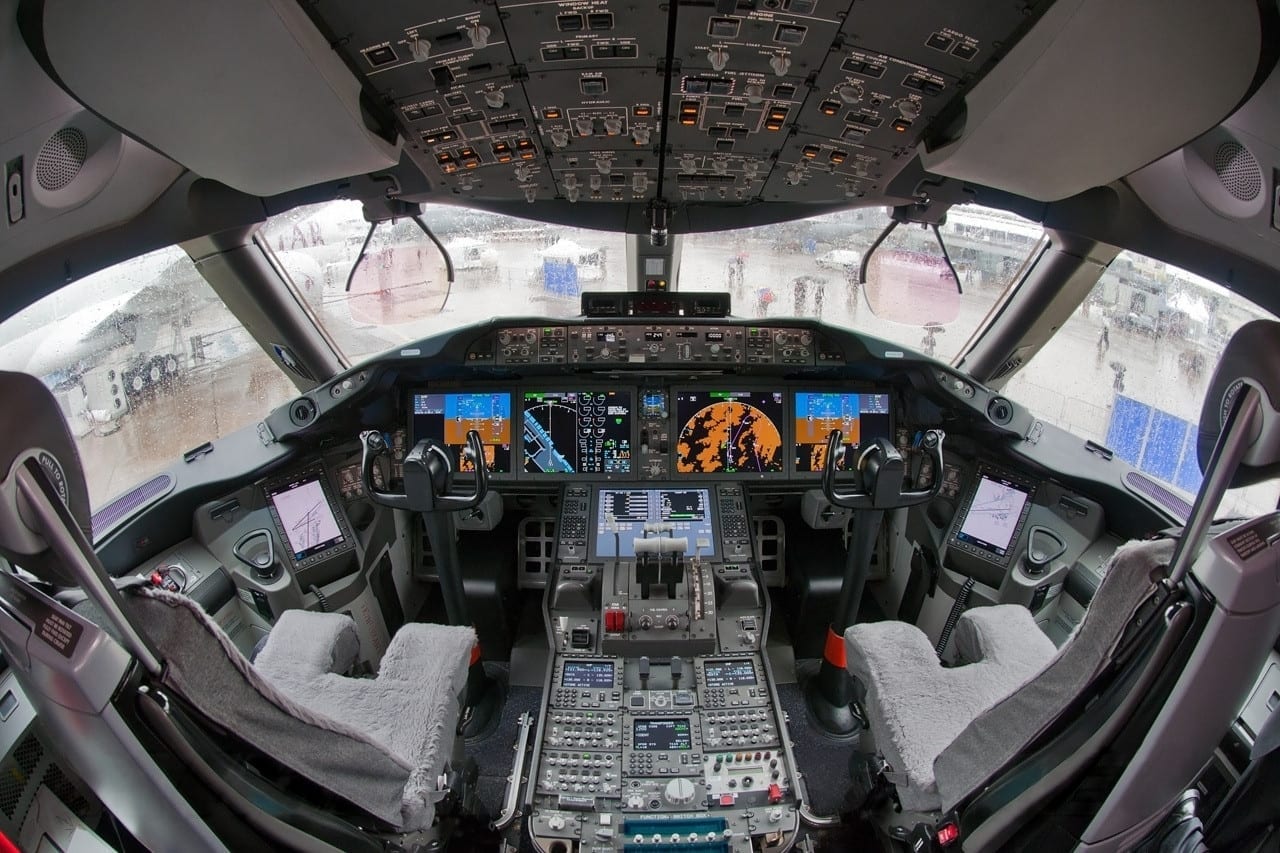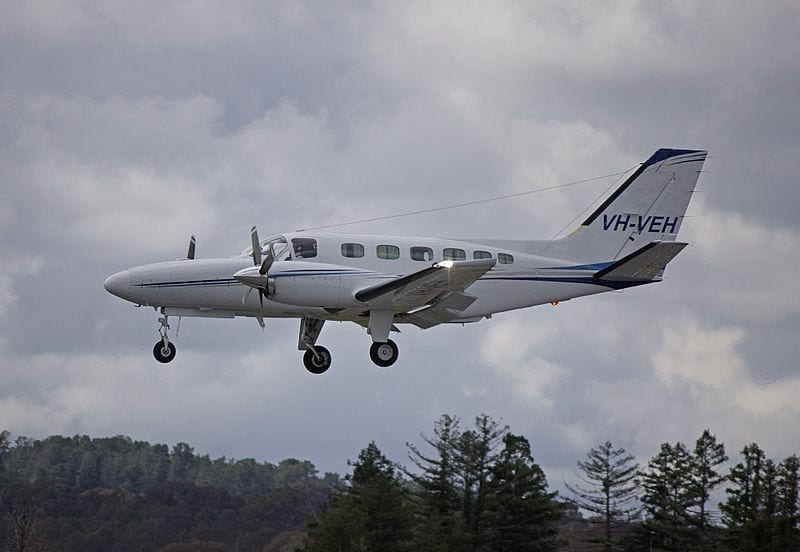
Manual override and Occam’s razor
OpinionWhat if there were an easier way to revert to manual control? To remove the so-called “envelope protection” algorithms built into modern flight control systems. We’ve all heard the adage: Aviate, Navigate, Communicate. But can you really aviate when control inputs are analyzed thousands of times a second and then spit out to the control surfaces?

Friday Photo: sharing the sky
Friday PhotoI hadn’t been to the Reading WWII Weekend at KRDG in many years. As I was going through my photos picking out the best shot of each airplane in the show I stumbled across this shot of the P-51 along with a small winged friend sharing the sky. I’d love to say, it was planned, but it wasn’t. Never saw the bird while making the photo.

Jumpseating to Europe… maybe
I was thereI ran madly through the hallways, up then down, left then right, back-tracking when I took a wrong turn. If I missed the flight to Madrid, then I might as well turn around and head back to YIP. Finally, I saw the gate. Phew! Boarding had not yet began.

Eight things I know about flying in Arizona
What I Know About...Most people know that Arizona is home to the Grand Canyon. It really is amazing to stand at the edge of this geologic marvel. It is hard to comprehend its scope without having looked out over the edge. But another great way to appreciate this canyon is from the air.

Video tip: IFR departure considerations
Video TipInstrument approaches get a lot of attention, whether it's the intricacies of WAAS approaches or the unique missed approach procedures at mountain airports. Most pilots spend far less time considering the instrument departure, which is equally demanding. In this video tip, taken from Sporty's Instrument Rating Course, you'll review the key elements of an instrument departure, when to file one, and what the difference is between an ODP and a SID.

What’s a real emergency?
I was thereTemps were good, fuel pressure and quantity good, but there’s that oil pressure, lower still, but just a little lower. But temps are all good, maybe the gauge is misbehaving? I got a little alarmed, but the voice in the back of my head said, “There’s nowhere around here I want to land, there’s a snowstorm below me, this is not a good time for an emergency.”

Friday Photo: a Cub at rest
Friday PhotoThis is recreational aviation at its very finest. Pete Aarsvold shares a photo of two pilots relaxing on a bench, right next to a Cub Crafters Sport Cub sitting on an immaculate grass runway. Looks like the start of a great day.

I damaged my airplane. Now what?
I Can't Believe I Did ThatAbout three years ago, I had an unfortunate incident with my airplane. I flew to a nearby airport to pick up my instructor for a couple of days of training. We typically did intensive IFR training but this year, I wanted to refresh some basic flying skills so we planned a combination of some VFR basics and some IFR.

My first flying lesson
I was thereAfter spending some time doing basic airwork (turns, stalls, etc.) Hal said he was bored and took control of the airplane. First he tried looping the Cub, which did not work out as his 200+ pounds plus my paltry 115 pounds made the maneuver impossible. He would nose the plane over, build up airspeed and pull the nose up with full power and, somewhere near vertical, the plane would fall back out of the sky.

“In this business we play for keeps”
I was thereFew dreams worth having are achieved with shortcuts and in flying airplanes there is no substitute for experience. The increase in airman wisdom is recorded on paper in logbooks. More importantly, the experience gained is remembered in your mind and heart, the rewards being increased skill, finesse in the craft, and survival.

Friday Photo: cranberry harvest
Friday PhotoCranberries are knocked off their bushes while the bogs are flooded, allowing them to be corralled for harvest. We may be flatlanders here in this part of our state but the water views (both coastal and lakes) make it beautiful flying country. This annual sight is always one of my favorite iconic views of the Cape Cod area.

History moving forward – my flight in a B-17
I was thereI like history. I try to imagine what it was like to experience the things that I read about. What were the sounds, the smells, the feelings? Well, after volunteering with our EAA Chapter 17 that hosted the B-17, I was able find out. A group of ten of us who volunteered over the weekend were selected to tag along on the repositioning flight.

Eight things I know about flying in Georgia
What I Know About...Georgia was my birthplace for flying. I cut my teeth piloting a little Alarus out of DeKalb-Peachtree airport in northeast Atlanta (PDK), and that was home base for 15 years. I set a goal of landing at every public-use airport in the state, and dang near got most of them, even if it was just a touch and go. Over that time I learned a thing or two about flying in the South.

Go or No Go: IFR over the mountains
Go or No GoSince upgrading to a Cirrus SR22 Turbo a few years ago, you've really started using your instrument rating for serious travel. The airplane is well-equipped with a TKS deice system, Garmin glass cockpit, and built-in oxygen. All of those are useful for your typical flights around Montana, Idaho, Utah, and Oregon. Today is no exception, as the mission calls for a two-hour flight from Billings, Montana (BIL), to Boise, Idaho (BOI).

Accident report roundup: time in type
Accident Reportin spite of the well-meaning advice, total time is still the measuring stick for pilots. A pilot with thousands of hours is assumed to be safe, and both his insurance premium and his reputation around the airport will probably reflect that assumption. But read through NTSB accident reports and you’ll quickly notice another measure of pilot proficiency is more important: time in type.

Friday Photo: the Twelve Apostles
Friday PhotoTowering over the shoreline of Port Campbell National Park in Victoria, Australia, the Twelve Apostles is a unique formation of limestone stacks. Neil Sidwell captured a great photo of this unique vista from the cockpit of his ICP Savannah. While many visitors see it from the nearby road, there's nothing like an aerial view.

Memories of flying the Connie
I was thereThe first big airplane I ever flew was the Lockheed Constellation, affectionately known as the Connie. The Connie simulator was just a procedures trainer (no motion, no visual) so most of the flight training was done in the airplane. I confess I was scared to death! The biggest thing I had ever checked out in was the Piper PA-23 Apache.

The perfect pilot myth is finished
OpinionThe rules are that test pilots must recognize the trim failure, for example, by some positive event. Once that positive identification is made, the test pilot must wait exactly three seconds before taking the proper action to disable to system. When non-pilots hear this information, their mouths drop open. They utter something like “that’s crazy. Three seconds! That’s just nuts.”

From the archives: Wolfgang Langewiesche on airports in every town
Air Facts ArchivesThis inspiring article, first published in the October 1956 edition of Air Facts, reflects the big dreams of the mid-1950s and perhaps the missed opportunities for general aviation. Legendary writer Wolfgang Langewiesche argued for a nationwide network of landing strips (not airports, just a place to land), to be created as a part of the Interstate Highway System that was born with the passage of the Federal Aid Highway Act of 1956.

I didn’t look in the right place
I was thereI was a 4000-hour Mooney pilot (all in the same Mooney) several years ago when a friend, a well-known sculptor who was having three pieces fabricated in Princeton, New Jersey (39N), asked if I would fly him from our home base in East Hampton, New York (HTO), to check on how they were progressing. My friend was eager to fly, so we looked forward to our adventure on a chilly, blustery spring day.
